
How Does Blogging Help with SEO Today?
How Does Blogging Help with SEO Today?
When looking for ways to improve a website’s visibility, many business owners and marketers turn to blogging. It’s been recommended for years as an essential part of any digital marketing strategy. However, search engines and their algorithms change constantly, and it’s natural to ask whether blogs really make a difference now.
There’s plenty of evidence that blogging continues to play a significant role in search engine optimisation (SEO). But understanding how it helps means breaking down the practical and technical benefits that regular, quality content adds to your site.
How Blogging Influences Search Rankings
The primary job of search engines is to deliver the most relevant, accurate, and up-to-date content to users. Blogging aligns nicely with this goal, and search engines tend to reward sites that are active, frequently updated, and rich in information.
Let’s look at some of the ways regular blogging can influence your search rankings:
- Fresh Content Signals: Search algorithms often favour sites that are regularly updated. A blog makes it easy to refresh your site with new content, keeping both users and search engines coming back.
- Expanded Keyword Reach: By publishing multiple posts, you can naturally work in a broader range of keywords, including long-tail searches and recurring topics.
- Increased Content Indexation: Each blog post creates an additional page for search engines to crawl and index, improving the chances of appearing in results for various queries.
It’s not just about quantity, though. Consistent quality plays a significant role. Google’s algorithm is getting better at understanding context, value, and trust, so the blogs that help most are well-written, accurate, and helpful.
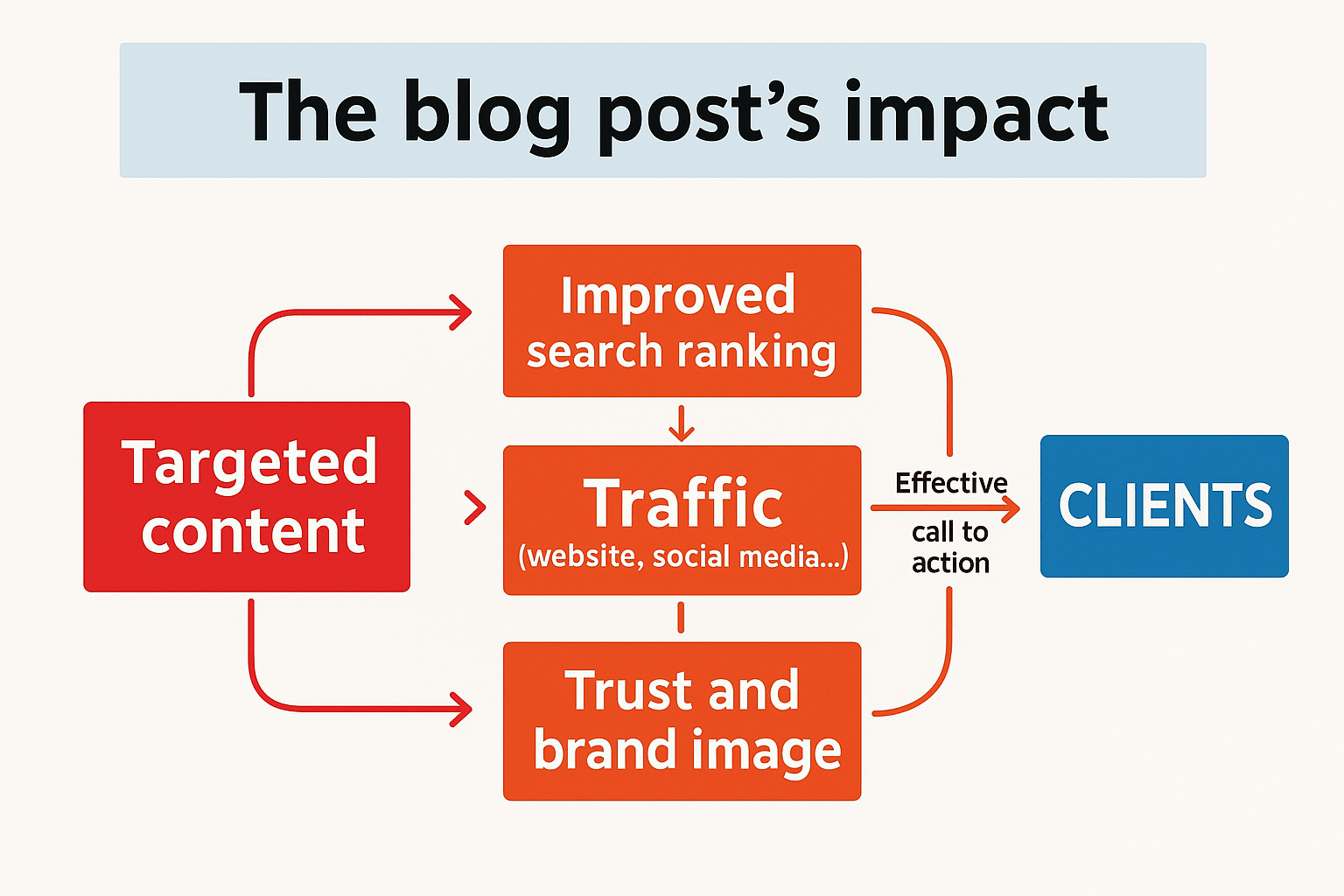
User Engagement: Blog Readers and Conversions
Quality blog posts can attract new visitors by addressing specific needs, answering common questions, or clarifying technical topics. When visitors find value, they’re more likely to stay longer, explore other pages, or share the content.
Higher engagement can have downstream benefits for SEO. Google measures behavioural signals like:
- Time spent on site
- Pages per session
- Bounce rate
- Conversion Rates
If people arrive through search and stick around to read your post or move on to related topics, these are positive signals for ranking.
In one study by HubSpot, companies that blogged 16 times per month saw almost 3.5 times more traffic than those who blogged less than four times monthly. While quantity isn’t everything, frequent, valuable posts help build loyalty and conversions over time.
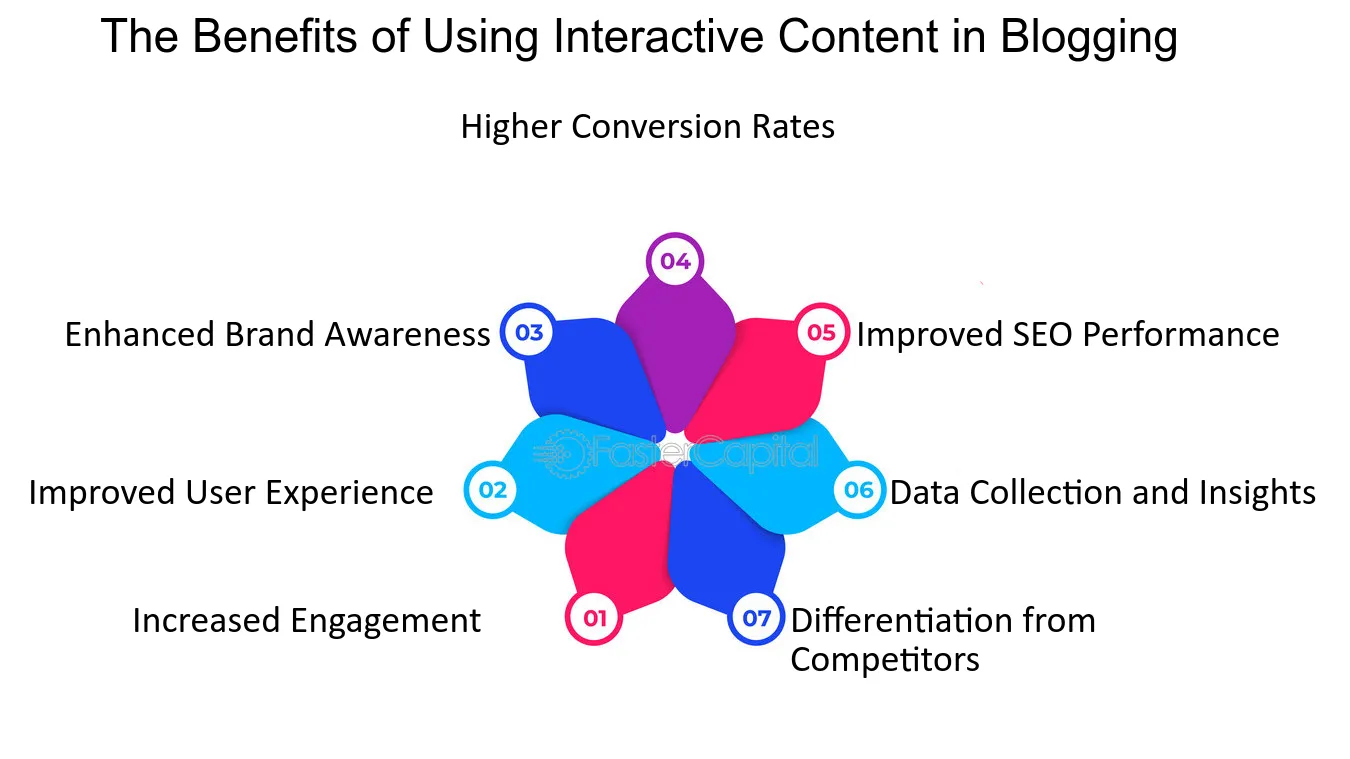
Image Source: faster capital
Creating More Opportunities for Internal and External Links
Internal linking is a staple of SEO. Blog content gives you multiple places to add links to important product, service, or informational pages within your website. This helps:
- Distribute “link equity” across your site
- Direct users towards high-value or conversion-focused content
- Help search engines understand the structure and importance of different pages
On the external side, blogs can serve as natural “link magnets.” Quality, insightful, or original posts can attract backlinks from other websites, which is one of the strongest ranking factors in search algorithms. According to Backlinko, pages with a higher number of backlinks tend to rank higher in search results.
Let’s see how blogging supports linking strategies:
| Type of Link | Benefit | Blogging Use Case |
|---|---|---|
| Internal Links | Distributes authority, guides users | Linking blog posts to product/service pages |
| External Backlinks | Increases authority, boosts ranking | Others referencing your research, how-tos, or insights |
Technical SEO for Blogs
Technical SEO forms the foundation that allows your blog content to be discovered, crawled, and indexed efficiently by search engines. Without strong technical SEO, even the best-written blog posts may struggle to rank. Here are the most important technical considerations for optimising your blog:
1. Optimised Blog Post URLs
Short, descriptive, and keyword-rich URLs are easier for both users and search engines to understand. According to Backlinko, URLs that are concise and include target keywords tend to rank higher in search results. For example, use instead of .
2. Schema Markup for Articles
Implementing structured data (schema markup) helps search engines better understand your blog content. Article schema can enhance your listings with rich snippets, such as publication date, author, and featured images. According to Google, pages with structured data are more likely to appear in rich results, which can increase click-through rates by up to 30%.
3. Mobile-Friendliness
Over 60% of global web traffic now comes from mobile devices (Statista, 2024). Google uses mobile-first indexing, meaning it primarily uses the mobile version of your content for ranking. Ensure your blog uses responsive design, legible fonts, and touch-friendly navigation to provide a seamless experience across all devices.
4. Fast Load Times
Page speed is a confirmed ranking factor. Research by Google shows that as page load time increases from 1 to 3 seconds, the probability of a visitor bouncing increases by 32%. Optimise images, leverage browser caching, and use content delivery networks (CDNs) to ensure your blog loads quickly.
5. XML Sitemaps
An XML sitemap helps search engines discover and index all your blog posts efficiently. Make sure your sitemap is updated automatically when new posts are published and is submitted to Google Search Console and Bing Webmaster Tools.
6. Canonical Tags
Duplicate content can dilute your SEO efforts. Use canonical tags to indicate the preferred version of a blog post, especially if similar content exists elsewhere on your site or if you syndicate your articles.
7. Secure HTTPS Protocol
Security is a ranking factor, and users expect safe browsing. Ensure your blog is served over HTTPS. According to Google, over 95% of traffic on its platforms is now encrypted.
8. Clean Internal Linking Structure
A logical internal linking structure helps search engines understand the hierarchy and relationship between your blog posts and other pages. Use descriptive anchor text and ensure every post is accessible within a few clicks from your homepage.
9. Crawlability and Indexability
Use robots.txt to control which parts of your blog are accessible to search engines, and avoid blocking important content. Regularly check for crawl errors in Google Search Console to ensure all valuable posts are being indexed.
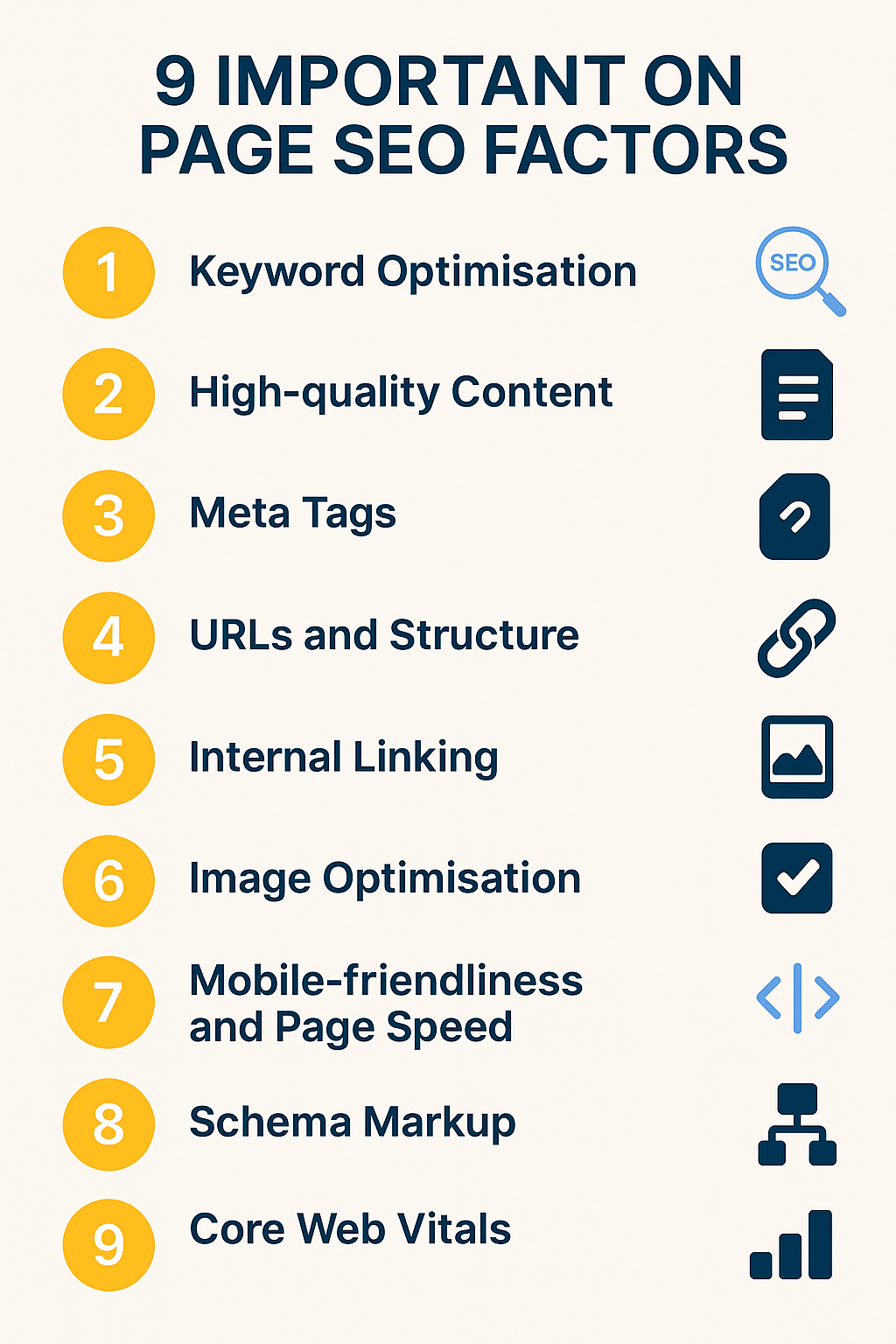
By addressing these technical SEO elements, you create a strong foundation that maximises the visibility and ranking potential of every blog post you publish. If you’re interested in learning more about optimising your website, explore our in-depth article on what on-page SEO is and why it matters
Content Refresh and Updating Strategies
Regularly refreshing and updating your blog content is essential for maintaining strong SEO performance and ensuring your information remains accurate and valuable to readers. Search engines favour websites that provide up-to-date, relevant content, and studies show that updating old posts can increase organic traffic by as much as 106% (HubSpot, 2022). Here’s how to implement an effective content refresh strategy:
1. Audit Existing Blog Content
Start by conducting a comprehensive content audit. Use tools like Google Analytics and Google Search Console to identify blog posts with declining traffic, outdated information, or low engagement. Prioritise posts that target high-value keywords or have historically performed well.
2. Update Statistics, Facts, and Examples
Replace outdated statistics, facts, and case studies with the latest data. According to Content Marketing Institute, 87% of top-performing blogs regularly update their content to maintain accuracy and authority. Ensure all external links point to current, reputable sources.
3. Enhance Keyword Optimisation
Revisit your keyword strategy for each post. Incorporate new relevant keywords, especially long-tail variations that may have emerged since the original publication. Use keyword research tools to identify trending search terms in your niche.
4. Improve Readability and Structure
Break up large blocks of text, add subheadings, bullet points, and visuals to improve readability. Updating the structure not only benefits users but also helps search engines better understand your content.
5. Add New Insights and Multimedia
Include fresh insights, expert quotes, or recent developments in your industry. Adding images, infographics, or videos can increase user engagement and time on page—factors that positively influence SEO.
6. Optimise Meta Tags and Internal Links
Revise meta titles and descriptions to reflect updated content and target keywords. Add or update internal links to direct readers to newer, relevant articles, strengthening your site’s overall SEO structure.
7. Republish and Promote
Once updated, republish the post with a new date to signal freshness to search engines. Promote the refreshed content through your newsletter, social media channels, and outreach to relevant websites for potential backlinks.
8. Monitor Performance
Track the performance of updated posts using analytics tools. Monitor changes in rankings, traffic, and engagement to measure the impact of your refresh efforts and refine your strategy over time.
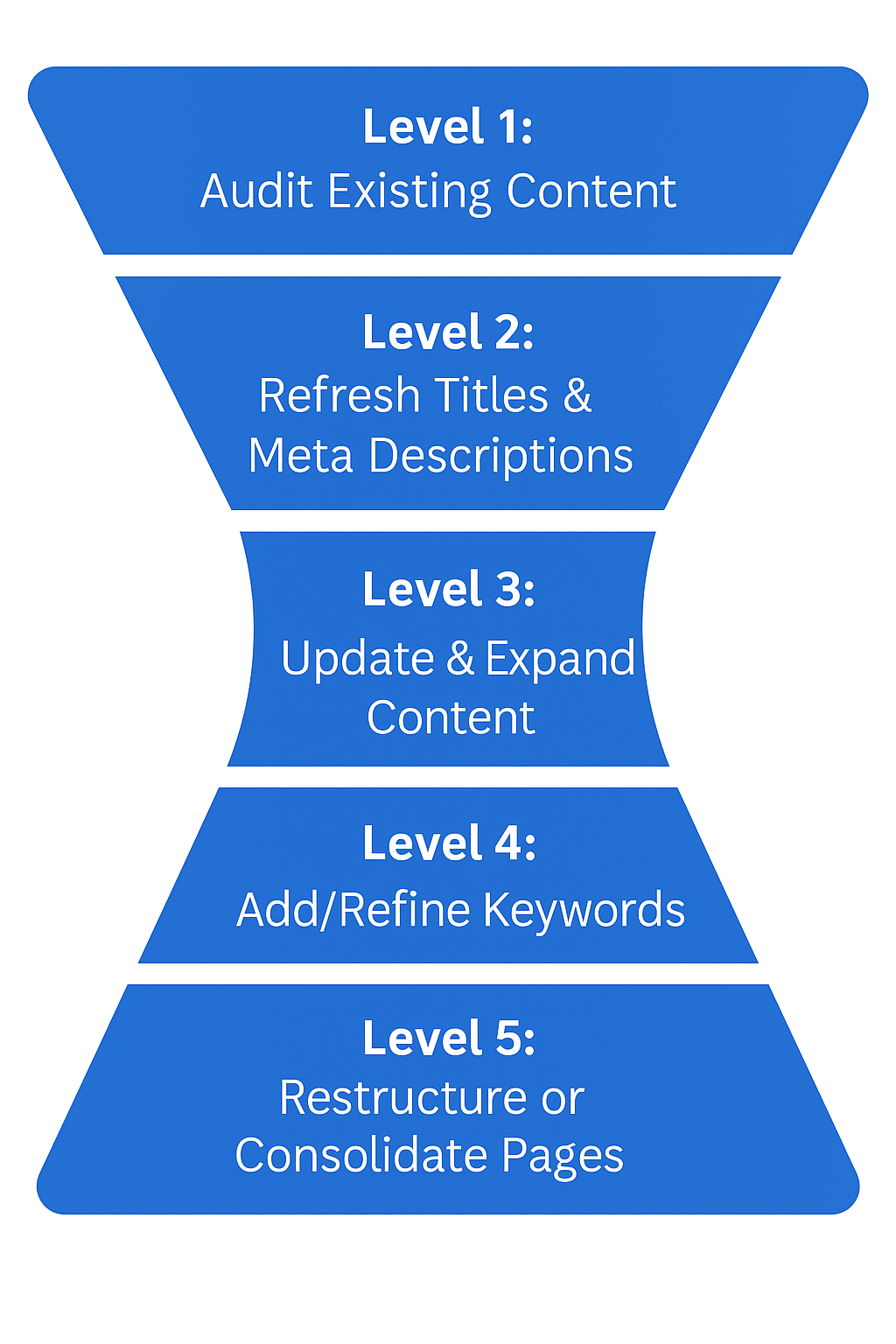
Advanced Internal Linking Techniques
Effective internal linking is a powerful yet often underutilised SEO strategy that can significantly enhance your website’s authority, user experience, and search rankings. According to a study by NinjaOutreach, websites with a strong internal linking structure can see up to a 40% increase in organic traffic. Here are advanced techniques to maximise the impact of your internal links:
1. Implement Topic Clusters and Pillar Pages
Organise your blog content into topic clusters, where a central “pillar” page covers a broad subject and links to more detailed “cluster” posts. This structure signals to search engines that your site is an authority on the topic, improving the ranking potential for both pillar and cluster pages. HubSpot reports that topic clusters can increase organic traffic by up to 50% within six months.
2. Use Descriptive, Varied Anchor Text
Avoid generic phrases like “click here.” Instead, use descriptive anchor text that naturally incorporates target keywords. Vary your anchor text to avoid over-optimisation penalties and to provide context for both users and search engines. According to Moz, diverse anchor text helps search engines better understand the relevance of linked pages.
3. Link to High-Value and Conversion Pages
Strategically direct internal links from high-traffic blog posts to key conversion pages, such as product or service pages. This not only passes link equity but also guides users toward your most important content, increasing the likelihood of conversions.
4. Automate Internal Linking
For large websites, consider using internal linking plugins or scripts that automatically suggest or insert relevant links within your content. This ensures consistency and saves time, especially as your blog grows.
5. Optimise Link Placement
Place internal links within the main body of your content, as links in prominent positions carry more SEO value than those in footers or sidebars. A study by Ahrefs found that contextual links are more likely to be followed by both users and search engines, boosting the authority of the linked pages.
6. Regularly Audit and Update Internal Links
Broken or outdated internal links can harm user experience and SEO. Conduct regular audits using tools like Screaming Frog or SEMrush to identify and fix broken links, update anchor text, and ensure all links point to relevant, live content.
7. Maintain a Logical Site Structure
Ensure that every blog post is accessible within a few clicks from your homepage. A shallow site structure helps search engines crawl and index your content more efficiently, improving overall site visibility.
For a comprehensive guide on mastering internal linking and boosting your SEO success, read our detailed article: Master Internal Linking and Boost SEO Success.
By applying these advanced internal linking techniques, you can enhance your website’s authority, improve user navigation, and drive sustained SEO growth.

Blogging Enhances Topical Authority
Search engines look beyond keywords: they’re mapping which sites are “experts” on different topics. By covering a subject comprehensively in multiple blog posts, your website can be recognised as an authority in its niche.
For example, a website about home automation could cover topics like smart lighting, home security, voice assistants, and energy management. Blog posts can answer common questions, compare solutions, or offer tutorials, all signalling depth and expertise.
Building topical authority not only improves your chances of ranking for primary keywords but also for many related searches. The more complete your coverage, the more likely search engines will trust your site for that subject matter.
Keyword Optimisation and Intent
Keyword research is at the heart of SEO-driven blogging. Each blog post can target unique search terms, especially long-tail keywords, that would be unnatural or too niche for core product or landing pages.
For instance, a sports equipment retailer’s main page may target “buy running shoes,” while blog posts can address searches like “best shoes for marathon training in wet weather.” These specific, intent-driven queries attract visitors who are often deeper in the buying funnel.
There are a few key tips to keep in mind:
- Don’t over-optimise: Natural language and user-first writing perform better than keyword stuffing
- Match search intent: Understand what the reader wants, whether it’s information, a solution, or a product recommendation
- Organise content: Use headings and formatting for readability, which also helps search engines parse your post’s topics
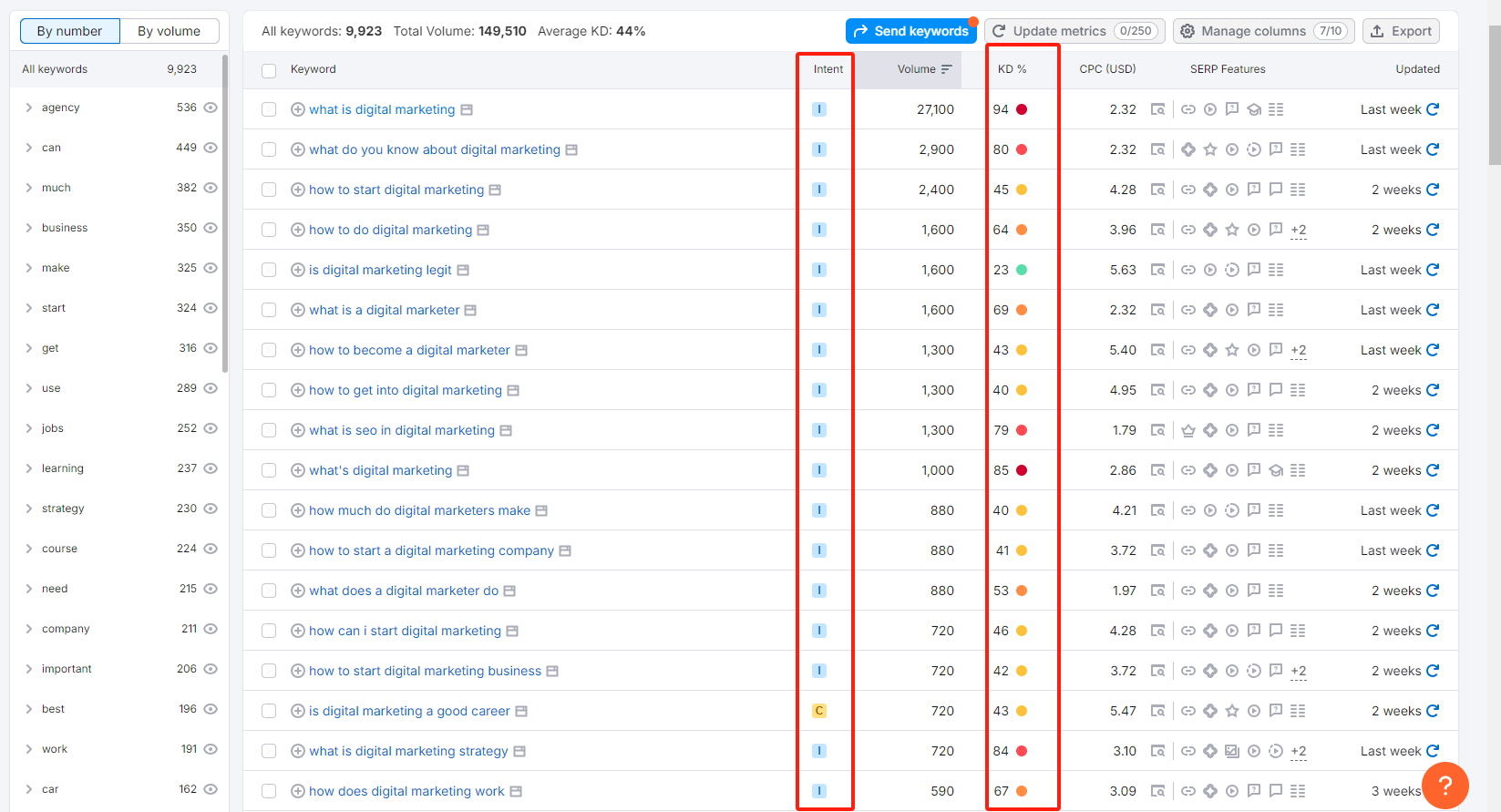
Voice Search and Featured Snippets
One trend that’s impossible to ignore is the rise of voice search. People phrase voice queries more conversationally, and they often ask complete questions.
Blogging lets you answer specific questions, sometimes even starting with phrases such as “What is,” “How do I,” or “Why does.” These structures make your content ideal not only for long-tail search terms but also for earning featured snippets (the boxed answers at the top of some Google results).
Optimising your blog posts for these opportunities means:
- Clearly and concisely answering questions near the start of your content
- Using bullet points or numbered lists for step-by-step answers
- Supporting answers with context, examples, or visuals
Blogs that land in featured snippet spots tend to get more clicks and brand visibility.

Blogging and Social Signals
While social media shares aren’t a direct ranking factor, the interaction can result in wider exposure, indirect backlinks, and even brand searches.
High-quality blog posts are some of the most shareable assets on social platforms. When shared, they reach new audiences, invite commentary, and sometimes catch the eye of journalists, bloggers, or influencers who might link back.
Adding social sharing buttons, fostering an active commenting community, and repurposing blog content for other channels can magnify these benefits.
The SEO Value of Evergreen Content
Not every blog post needs to chase the latest trend. Some of the best performers are evergreen posts that remain relevant for months or years. These are how-to guides, definitions, or resource lists that attract steady search traffic over time.
Publishing evergreen content has a few notable strengths:
- Continues to draw traffic long after the initial publication
- Tends to attract more backlinks as it becomes a recognised resource
- Requires less frequent updating than news-driven posts
A mix of evergreen and timely posts gives your blog balance—a steady baseline with occasional spikes driven by trending topics.
Analytics: Measuring Blog Impact on SEO
Smart marketers keep an eye on their blog’s SEO performance. Popular tools like Google Analytics, Ahrefs, or SEMrush provide valuable insights:
- Organic traffic growth: Are more visitors arriving via search engines?
- Top-performing posts: Which topics drive the most new visitors or conversions?
- Engagement metrics: Do readers click deeper into your site?
- Backlink growth: Are your posts attracting external citations?
Regular monitoring allows you to spot patterns, double down on what works, and update underperforming content.
Pitfalls and Best Practices
Blogging’s benefits for SEO are real, but not every post makes an impact. Some common mistakes include:
- Publishing shallow or duplicate content
- Ignoring search intent or writing only for search engines
- Letting topics stray too far from your core business
A focused strategy, combined with consistent output, delivers the best results. Try these approaches:
- Map blog topics to audience interests and real keyword research
- Update older posts to keep them relevant
- Structure posts with headings, bullet points, and images for readability
SEO takes patience. While some posts may rank quickly, others gather momentum over time as they earn backlinks, shares, and proof of value.

Image Source: Hostitsmart
How Blogging Works with Other SEO Elements
While a blog can’t fix technical issues like slow load times or faulty site architecture, it builds on a foundation of good SEO practices. Keyword-optimised, well-structured content pairs best with:
- Mobile-friendly design
- Clear URL structures and website navigation
- Fast page load times
- Quality, crawlable code
Treat your blog as one piece of the SEO puzzle. It amplifies other efforts and, when connected, helps lift your site’s overall authority and visitor satisfaction.
The Numbers: Blogging’s Continued Relevance for SEO
Industry surveys and studies keep finding strong links between frequent blogging and SEO improvements.
- Companies with blogs produce an average of 67% more leads each month than those without (DemandMetric)
- Businesses with 401+ total blog posts get about twice as much traffic as those with 301–400 (HubSpot)
- The average word count of top-ranking content is over 1,800 words, and blog posts fit this format naturally (Backlinko)
These figures underline why so many organisations continue to invest time and resources into publishing and refining blog content.
Blogging remains a vital part of a robust SEO strategy. Ultimately, it’s about providing answers, building trust, and giving both search engines and humans irresistible reasons to visit your website and stick around.
